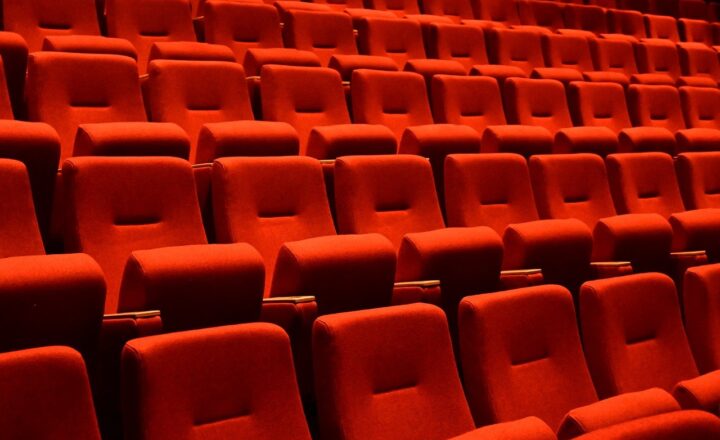
The 1990s marked a significant renaissance in the horror genre, revitalizing it with a blend of innovation, cultural commentary, and, of course, stylish aesthetics. At the forefront of this horror resurgence were two influential films: The Craft and Scream. Released in 1996, these films not only redefined horror but also shaped the pop culture of an entire generation. Let’s dive into how The Craft and Scream made horror movies cool again, turning them into a cinematic experience that resonated with both fans of the genre and newcomers alike.
1. The Cultural Context of the 90s
The 1990s were a time of significant cultural shifts in the United States. The generational divide following the end of the Cold War brought about a new kind of angst and skepticism among teenagers. Economic prosperity had shifted the landscape, and with it emerged a new democratic anxiety reflected in the media. This politically charged atmosphere set the scene for a fresh approach in horror film narratives.
The horror genre, typically rooted in gory scares and supernatural tales, began to adapt, incorporating commentary on social issues, technology, and the complexities of adolescence. As the era embraced a raw form of realism in representation, films like The Craft and Scream stepped in to tap into the fears, aspirations, and subcultures of youth during this time.
2. The Craft: Witchcraft and the Power of Femininity
The Craft, directed by Andrew Fleming, is a film about teenage girls who explore witchcraft and face the repercussions of their newfound powers. Released on May 3, 1996, it highlighted female empowerment through its representation of the teenage experience. The film starred Fairuza Balk, Robin Tunney, Neve Campbell, and Rachel True, creating a group of characters who embodied the ideals of independence and self-exploration.
The portrayal of these characters resonated strongly with young audiences, particularly girls seeking representation and understanding in a genre often dominated by male perspectives. The film cleverly intertwined themes of friendship, betrayal, and the quest for identity. Here are some aspects that made The Craft significant:
- Empowerment and Control: The film explored how one can assert control over their life through supernatural means, reflecting the struggles and rebellion of young women against societal expectations.
- Aesthetic Influence: The Craft established a unique aesthetic that has since become iconic – from the dark, moody visuals to the edgy fashion that influenced a generation of gothic and alternative styles.
- Dangers of Power: While the film romanticized witchcraft, it also served as a cautionary tale about the ethical implications of power and the consequences of jealousy and revenge.
The film’s exploration of these themes contributed to a new public discourse around the representation of women in horror films, making it a cultural phenomenon.
3. Scream: Meta-Horror and Self-Awareness
A few months later, the release of Wes Craven’s Scream on December 20, 1996, further transformed the horror landscape. This film not only redefined the slasher genre but also introduced a self-referential style of storytelling that blended horror with comedy, breathing new life into a genre that had become predictable.
**
At its core, Scream was a commentary on horror film tropes and clichés, using sharp wit and intelligence to appeal to both die-hard fans and casual viewers. Key elements included:
- Self-Awareness: The characters were aware of horror movie conventions, making them unpredictable. This self-awareness prompted viewers to rethink their relationship with horror films while laughing at their own fears.
- Strong Characters: Featuring heroines like Sidney Prescott (played by Neve Campbell), the film presented relatable characters with depth and complexity, changing the narrative around final girls.
- Innovative Marketing: The iconic Ghostface mask and Catchphrase “What’s your favorite scary movie?” sparked a new cultural trend, leading to merchandise and parodies, embedding Scream into pop culture.
The balance of horror and humor allowed Scream to connect with audiences on multiple levels, facilitating a new wave of interest in horror films that had been missing in the years prior.
4. Impact on the Genre and Beyond
Together, The Craft and Scream ushered in a new era of horror defined by fresh voices, complex narratives, and diverse characters. This innovative approach paved the way for a wave of similar films in the late 90s and early 2000s, including I Know What You Did Last Summer, Final Destination, and the Saw franchise.
They targeted a younger demographic that was hungry for media that resonated with their experiences, allowing horror to become more relatable than ever before.
On a broader level, these films impacted the fashion, music, and youth culture of the era. The combination of grunge aesthetics from The Craft and the playful self-awareness of Scream established a cultural lexicon that would echo in various media forms, from television to video games.
5. Conclusion: The Legacy of the 90s Horror Renaissance
The Craft and Scream were not just films; they were cultural milestones that illustrated the power of horror to reflect societal realities while entertaining audiences. They made horror cool again by breaking traditional norms, embracing duality, and offering a new lens through which to understand fears and desires.
The legacy of these films continues to influence horror today, reminding us that the genre can be both thrilling and thought-provoking. As we look back at the 90s renaissance, it is clear that The Craft and Scream have left an indelible mark—not only in horror but in the broader context of film and popular culture.
Whether it was through exploring the darker sides of teenage life or poking fun at horror conventions, these films opened the door to a more nuanced and compelling horror landscape. One cannot help but wonder: what new edges will horror explore in the future, influenced by the groundbreaking work of The Craft and Scream?






